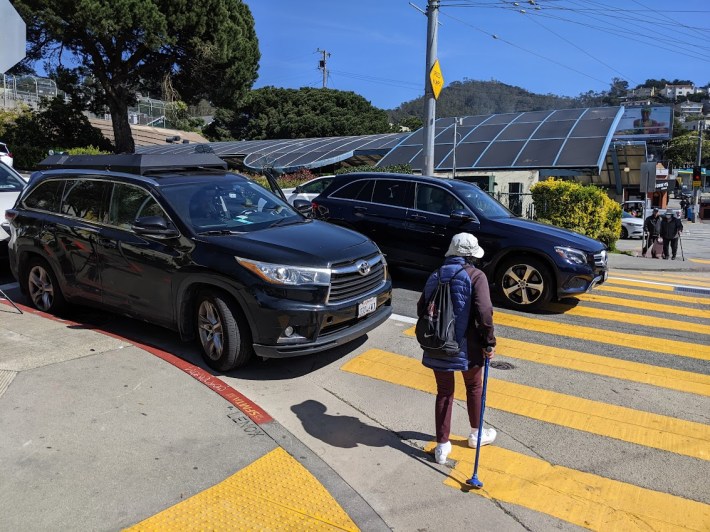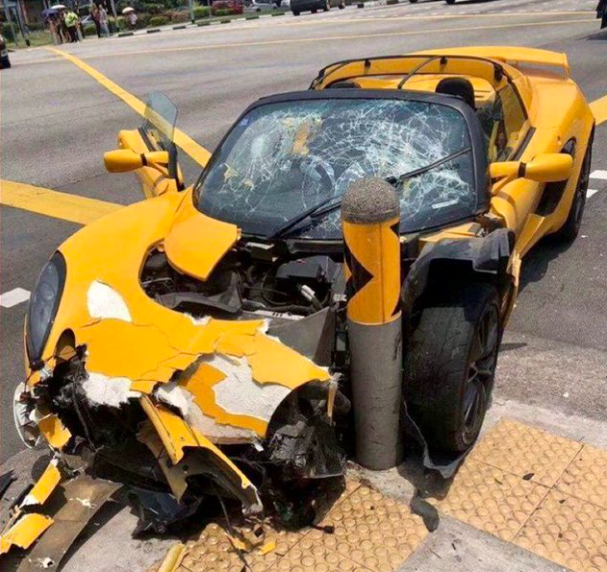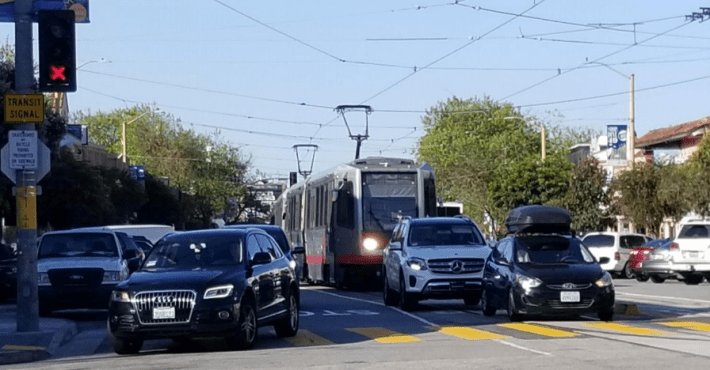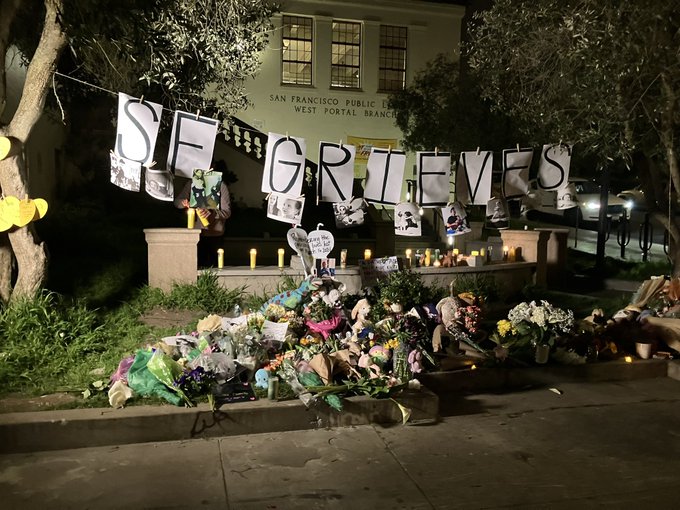Note: GJEL Accident Attorneys regularly sponsors coverage on Streetsblog San Francisco and Streetsblog California. Unless noted in the story, GJEL Accident Attorneys is not consulted for the content or editorial direction of the sponsored content.
The image above is a testament to the costs incurred when a city prioritizes parking and the free movement of automobiles over all else. As Streetsblog readers are surely aware, it's a shrine to a family destroyed by a driver while they waited at a West Portal bus stop to go to the San Francisco zoo.
San Francisco's mayor, when asked about the West Portal tragedy, told the Standard that she's "not sure that this particular incident fits in the scope of that problem around Vision Zero, but our goal is to make sure we are doing everything we can to ensure the safety of people in this city."
When I first read that comment from the mayor and a similar one from the police, I was apoplectic. The Marin County Bicycle Coalition's Warren Wells put it perfectly on Twitter:
Unless your car is struck by lighting or hit by a fucking meteor, traffic engineering is *always* a factor.
— Warren J. Wells, AICP 🚴🏙️🦀 (@WarrenJWells) March 18, 2024
A 3-month-old baby is now an orphan, and police are tripping over themselves excusing the city's traffic engineers. https://t.co/2SsfFkIwYr pic.twitter.com/1iEAM9PjXf
It's sad that the mayor and the police brass have taken so little interest in learning about street safety, as evidenced by these comments and others. Engineering, education, and enforcement—those are supposed to be pillars of Vision Zero. San Francisco fails on all three.
Your focus should be on getting SFPD to stop their illegal wildcat strike that has been going on since 2020. Tell them to do their job or find another job. San Francisco's utter failure to meet its Vision Zero goal is on them and on you. https://t.co/D3dZ266yUB pic.twitter.com/cz0xpVxgsM
— Jef Poskanzer (@jefposk) March 17, 2024
As to enforcement, just look at the above chart. To underscore that failure, for hours before and during Monday night's vigil, the car in the photo below sat parked illegally in the daylighting zone at Ulloa and Lenox, on top of bent soft-hit posts, mere feet from Saturday's tragedy. It was right there for the tens of police and SFMTA and city officials, including the mayor herself, to see. And yet even in that situation they simply refuse to do even basic enforcement.

And as to engineering, unless it was a medical event, nobody's going to tell me the driver who caused Saturday's tragedy drove like Mother Teresa until the Saturday when she blasted through a bus shelter and a steel bench and massacred a family. Reckless drivers get away with their crimes for years, because our streets are specifically engineered to let them get away with it. So they're able to drive recklessly—one might even say they're encouraged to do it—until they cause a tragedy.

I'd suggest, yet again, that we start designing streets to force drivers to go slow and to make it so reckless drivers crash into things before people, as in the image above. Instead, any effort to narrow lanes and do things that would actually force safe behavior is immediately vetoed by SFMTA and the city.
Moreover, if this city really cared about its transit-first commitments—which is directly connected to Vision Zero—it would be impossible to drive through West Portal on Ulloa to start with. The current configuration takes traffic through the rail junction at the entrance to the Twin Peaks tunnel, delaying trains and creating mayhem for all the transit riders using the station.

There should be concrete and steel diverters forcing drivers off West Portal Avenue in one direction and off Ulloa in the other so they don't cross in front of trains coming in and out of the tunnel (see above diagram). That would eliminate a major delay for Muni and give people more incentive to take transit and not drive in the first place. This is a zone with way too many pedestrians, including families with children, scrambling back and forth to tolerate a free flow of traffic.
Furthermore, the full length of the tracks should be physically separated on car-free transit lanes (as indeed, much of the Muni system already is). If that means a loss of parking, so be it. There's no way a train full of people should be sitting in traffic, as seen below.

But this mayor and this round of officials have made it clear they aren't going to take the concrete and politically challenging steps needed to prevent more such tragedies. A few years ago, the agency attempted to pilot some very minor turning restrictions for cars at West Portal, but that was immediately attacked by merchants and then-Supervisor Norman Yee. Supervisor Melgar needs to step up in the wake of this tragedy and advocate for a complete ban on cars crossing in front of trains coming into and out of West Portal station. During the vigil, which forced the closure of Ulloa, this is in effect what happened, albeit temporarily. The diverted traffic flowed just fine.

What happened on Saturday was the result of decades of decisions to put motoring convenience above every other consideration. The police and the mayor should be ashamed of themselves for suggesting this crash wasn't about Vision Zero. San Francisco, and the victims of Saturday's tragedy, deserve better.





